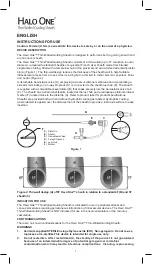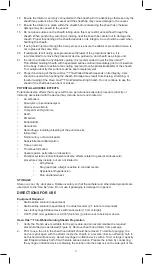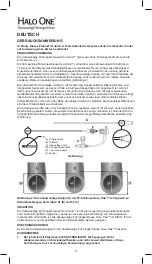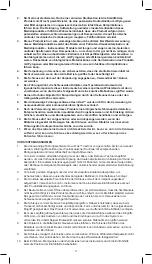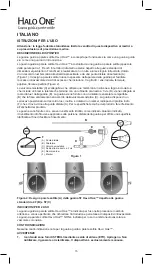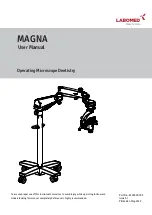
2
and/or resterilization of the present medical device increases the probability that
the device will malfunction due to potential adverse effects on components that are
influenced by thermal and/or mechanical changes.
3. This device has been designed for single use only. Reusing this medical device
bears the risk of cross-patient contamination as medical devices – particularly
those with long and small lumina, joints, and/or crevices between components
– are difficult or impossible to clean once body fluids or tissues with potential
pyrogenic or microbial contamination have had contact with the medical device for
an indeterminable period of time. The residue of biological material can promote
the contamination of the device with pyrogens or microorganisms which may lead to
infectious complications.
4. Visually inspect the packaging to verify that the sterile barrier is intact. Do not use if the
sterile barrier is opened or damaged.
5. Use the sheath prior to the “Use By” date specified on the package.
6. Do not advance the guidewire, sheath/dilator, procedural device, or any component if
resistance is met, without first determining the cause and taking remedial action.
7. Do not use a power injector through the sideport or the three-way stopcock
8. The
Halo One™
Thin-Walled Guiding Sheath has not been evaluated for use in the
neurovasculature or the coronary vasculature.
9. After use, this product may be a potential biohazard. Handle and dispose of in
accordance with acceptable medical practices and applicable local, state and federal
laws and regulations
10. Only advance or retract the sheath with the dilator inserted and only advance or
retract the sheath and dilator while placed over a properly sized guidewire.
11. Failure to deactivate the procedural device prior to removal through the sheath may
cause damage to the sheath and may result in patient injury.
PRECAUTIONS
1. The
Halo One™
Thin-Walled Guiding Sheath shall only be used by trained physicians.
Access procedures should be conducted under fluoroscopic guidance with appropriate x-ray
equipment and / or ultrasound.
2. Prior to beginning radial artery access, an assessment such as the Allen or Barbeau
test should be performed to assess the presence/adequacy of dual arterial circulation to
the hand. Radial artery access is not recommended for patients with abnormal Allen or
Barbeau test results or radial pulse, or insufficient dual arterial supply.
3. Prior to beginning pedal access, physicians should assess the vascular anatomy to assure
there is adequate antegrade flow at the level of the ankle.
4. The minimum acceptable sheath French size is printed on the package label. Do not attempt
to pass devices through a smaller size sheath introducer than indicated on the device label.
5. The pouch should be inspected prior to opening to ensure the sterile barrier is not
compromised. The device should be carefully removed and placed in the sterile field. The
entire procedure from skin puncture or incision to sheath withdrawal must be carried out
aseptically.
6. Carefully inspect the sheath prior to use to verify that the sheath has not been damaged
during shipment and that its size, shape and condition are suitable for the procedure for which
it is to be used. Do not use if product damage is evident.
7. Careful attention must be paid to the maintenance of tight valve connections for duration of
procedure to avoid blood leakage or the introduction of air into the system. Take remedial
action if any excessive blood leakage is observed.
8. Insert dilator into the center of the sheath valve. Forced insertion of the dilator which misses
the center of the valve may cause damage and result in blood leakage.
9. Advance or withdraw the sheath slowly. If resistance is met do not advance or withdraw until
the cause of resistance is determined.
10. When inserting, manipulating or withdrawing a device through the introducer always maintain
the introducer position.
11. Remove the dilator from the sheath slowly to avoid incomplete closing of the valve resulting in
blood leakage.
12. When using procedural devices close to the tip of the sheath care must be taken to ensure the
active mechanism portion of the procedural device (e.g., balloon, stent zone, material removal
section of atherectomy device) is not within the tip of the sheath. The radiopaque marker is
located within 5 mm of the end of the tip but does not mark the true distal tip of the sheath.
13. Before removing or inserting the interventional/diagnostic device through the sheath, aspirate
blood from the 3-way stopcock to remove any fibrin deposition which may have accumulated
in or on the tip of the sheath.
14. Ensure to deactivate the procedural device prior to removal through the sheath.
15. Take care when back loading the tip of the dilator over the guidewire to avoid damage to the
dilator.

